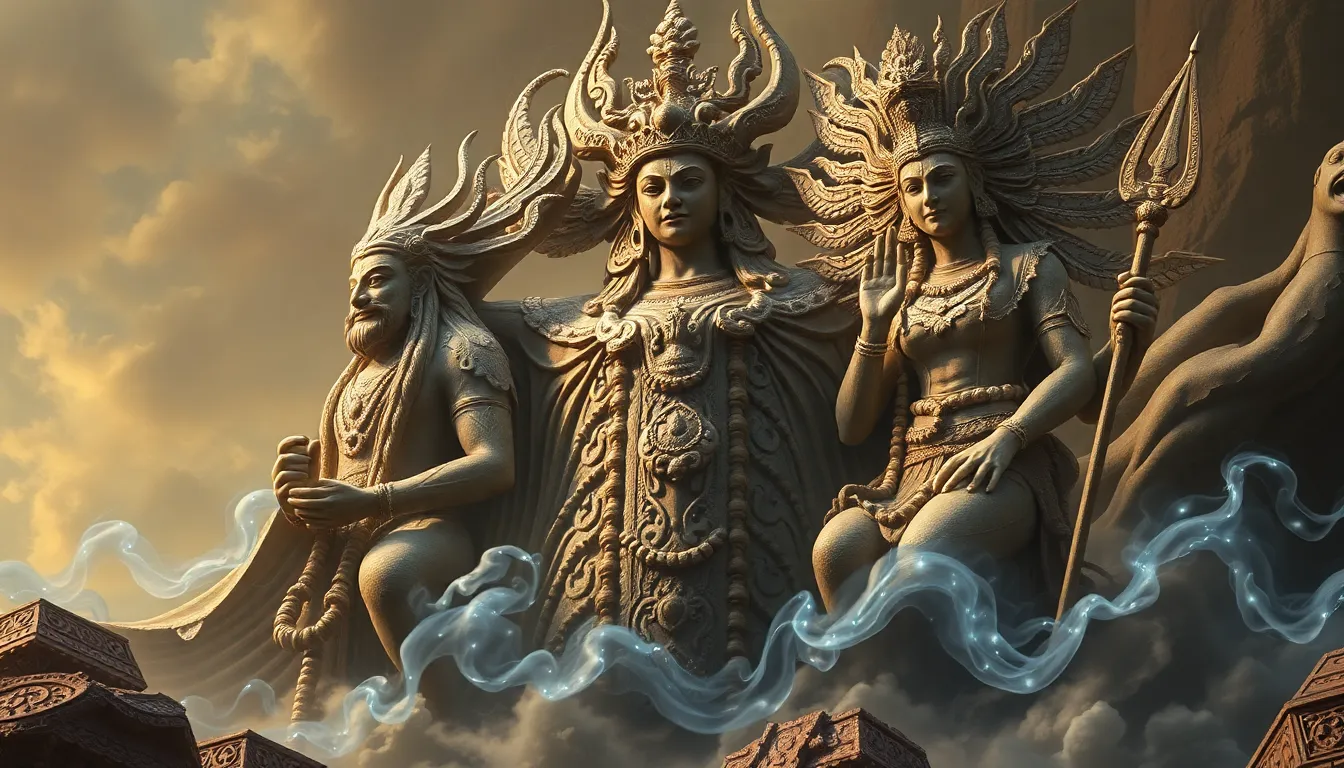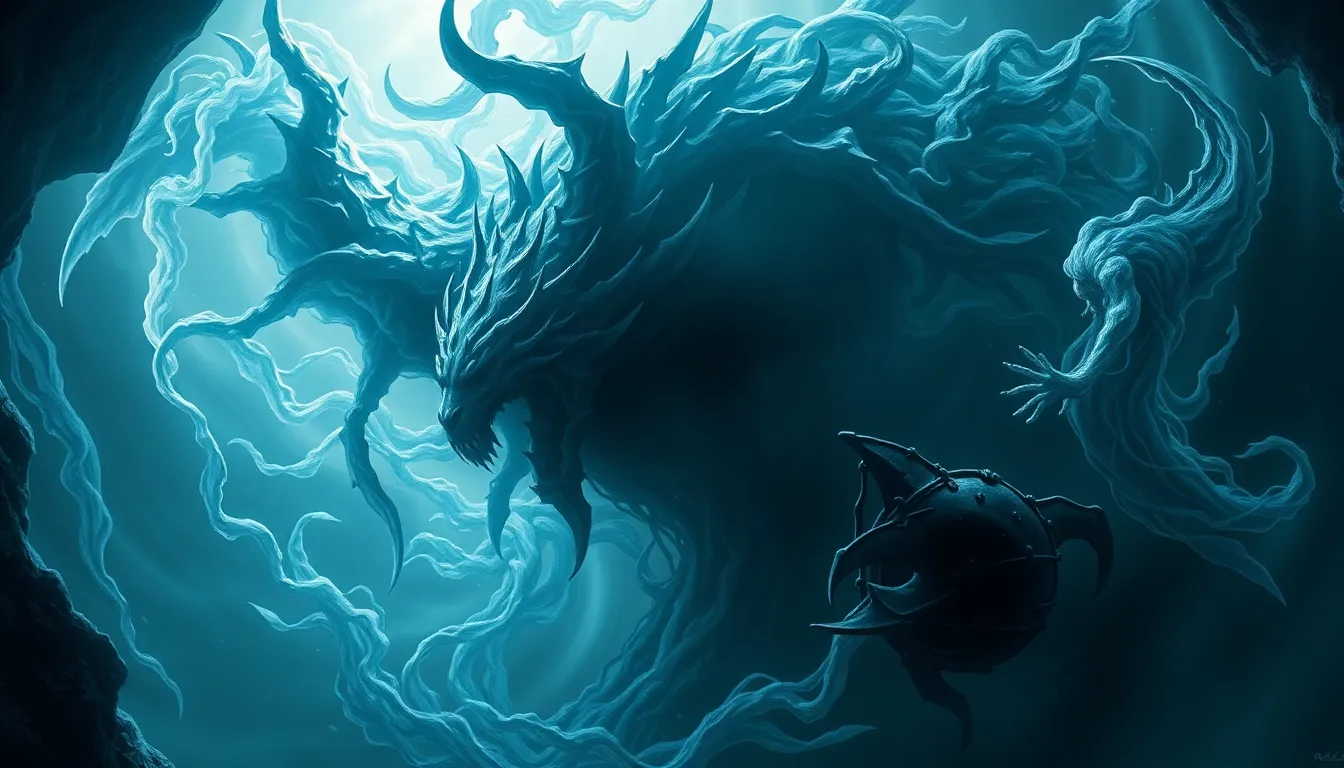The Trickster’s Journey: Navigating Chaos and Order
I. Introduction to the Trickster Archetype
The trickster archetype is a fascinating figure found in various mythologies and cultures around the world. Defined as a character who uses cunning, wit, and often deceit to achieve their goals, tricksters embody the duality of chaos and order. Historically, these figures have played essential roles in storytelling, serving as a bridge between the mundane and the extraordinary.
The significance of chaos and order in mythology and folklore cannot be overstated. These themes reflect human experiences, struggles, and the quest for meaning in a complex world. In this article, we will explore the trickster’s journey, examining their characteristics, the nature of chaos and order, and the lessons we can learn from these enigmatic figures.
II. The Nature of Chaos and Order
Chaos and order are fundamental forces that shape our lives. While chaos is often perceived as destructive, it can also serve as a source of creativity and innovation.
- Exploration of chaos as a creative force: Chaos can lead to new ideas and perspectives, pushing individuals to think outside the box.
- The role of order in establishing societal norms: Order provides structure, allowing societies to function and thrive.
- Interaction between chaos and order in human experience: The balance between these two forces is crucial for personal and societal growth.
III. The Trickster in Mythology and Folklore
Trickster figures appear across various cultures, each embodying unique traits while sharing common characteristics.
A. Key examples of trickster figures across cultures
- Anansi: The spider trickster of African folklore, Anansi is known for his cleverness and ability to outsmart stronger foes.
- Loki: In Norse mythology, Loki is a complex figure who oscillates between helper and antagonist, embodying mischief and chaos.
- Hermes: The Greek god of commerce and communication, Hermes is a patron of travelers and thieves, representing wit and cunning.
B. Common traits and characteristics of tricksters
Tricksters often share several key traits, including:
- Wit and cleverness
- Fluidity between roles (friend and foe)
- A tendency to challenge norms and authority
C. The duality of the trickster: friend and foe
The trickster embodies a dual nature, often oscillating between being a helpful ally and a disruptive force. This duality highlights the complexity of human relationships and societal structures.
IV. The Trickster’s Journey: Themes and Motifs
The journey of the trickster is rich with themes and motifs that resonate with our own experiences.
A. The call to adventure: disruption of the status quo
The trickster’s journey often begins with a disruption, challenging the existing order and prompting change.
B. The trickster’s use of wit and cunning to navigate challenges
Through cleverness and resourcefulness, tricksters navigate obstacles, often turning challenges into opportunities.
C. Transformative experiences: lessons learned through chaos
As they traverse chaos, tricksters gain insights and wisdom, ultimately transforming themselves and those around them.
V. The Role of Humor and Playfulness
Humor and playfulness are essential elements of the trickster’s journey, allowing for coping mechanisms in times of chaos.
A. The significance of humor in the trickster’s journey
Humor serves as a powerful tool for resilience, enabling tricksters to face challenges with a light heart.
B. How playfulness can facilitate coping with chaos
Engaging in playful behavior helps individuals navigate unpredictable situations, promoting adaptability and creativity.
C. The balance between laughter and seriousness in navigating life
Finding a balance between humor and earnestness can lead to a richer, more fulfilling life experience.
VI. The Trickster as a Catalyst for Change
Tricksters often serve as catalysts for social change, challenging norms and expectations.
A. How tricksters challenge societal norms and expectations
By questioning authority and societal structures, tricksters encourage critical thinking and promote progress.
B. Case studies of tricksters initiating social change
Examples of tricksters effecting change can be found in literature, history, and contemporary movements.
C. The fine line between chaos and constructive disruption
While tricksters can inspire positive change, their actions may also lead to chaos, highlighting the complexity of their role.
VII. The Psychological Perspective: The Trickster Within
The trickster archetype resonates within our psyches, offering insights into personal growth.
A. Understanding the trickster archetype in Jungian psychology
In Jungian terms, the trickster represents the shadow self, reflecting our hidden desires and impulses.
B. The trickster’s role in personal growth and self-discovery
Engaging with our inner trickster can promote self-awareness and personal transformation.
C. Navigating one’s own internal chaos and order
Understanding the interplay between chaos and order within ourselves can lead to greater harmony and balance.
VIII. Modern Interpretations of the Trickster
In contemporary literature and media, the trickster continues to thrive, adapting to modern contexts.
A. The trickster in contemporary literature and media
Modern novels, films, and shows often feature trickster characters who reflect societal issues.
B. Examples from film, television, and popular culture
Characters like the Joker from Batman and Deadpool exemplify the trickster archetype in popular culture.
C. How modern society perceives and embodies the trickster
In today’s world, the trickster figure resonates with those questioning authority and seeking change.
IX. Embracing Chaos: Lessons from the Trickster’s Journey
The trickster’s journey offers valuable lessons for navigating life’s complexities.
A. Strategies for finding balance between chaos and order
- Embrace creativity and spontaneity
- Practice adaptability in the face of uncertainty
- Foster resilience through humor and play
B. The importance of adaptability and resilience
Learning to adapt and bounce back from challenges is crucial for personal growth.
C. Learning to embrace uncertainty and creativity
Recognizing the potential within chaos can lead to innovative solutions and a more fulfilling life.
X. Conclusion
In conclusion, the trickster’s journey through chaos and order offers profound insights into human nature and societal dynamics. By understanding and embracing the trickster archetype, we can learn to navigate the complexities of life, harnessing the creative potential of chaos while maintaining a sense of order. Whether through humor, cunning, or the willingness to challenge norms, the trickster reminds us that both chaos and order are essential components of the human experience.




